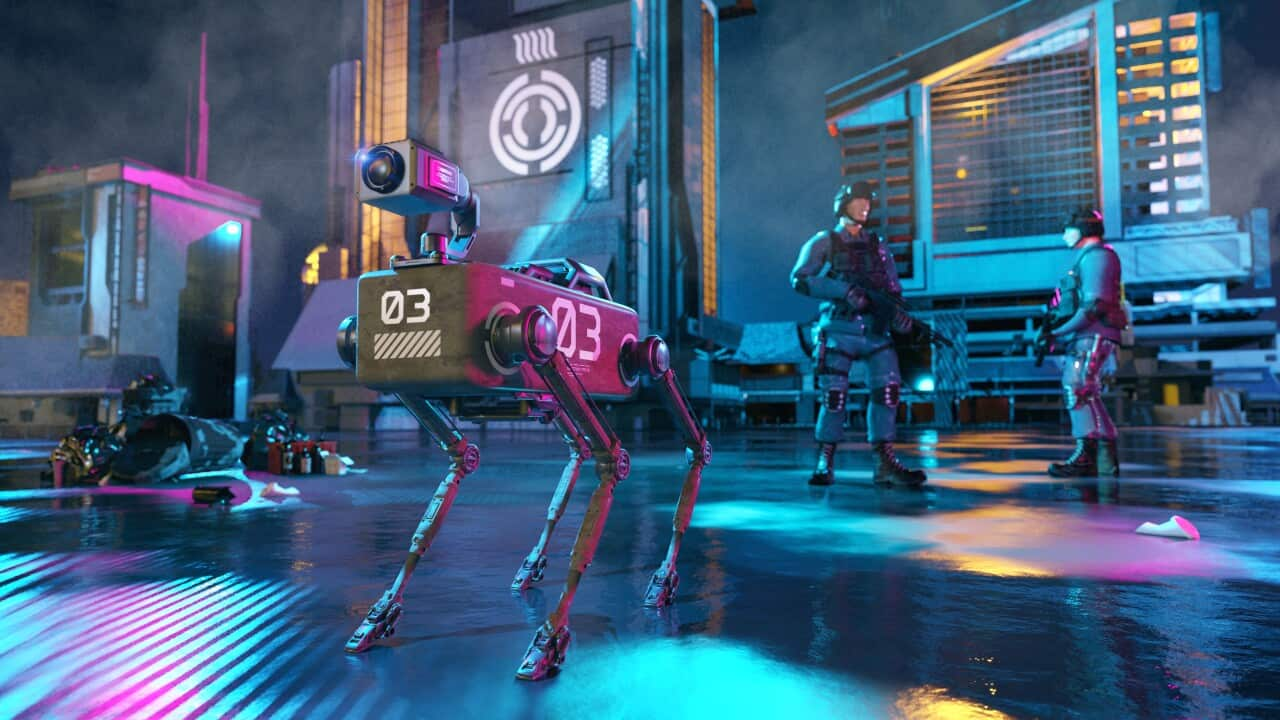“Before starting our interview, I want to make it clear that we can’t read anyone’s mind,” declares Professor Francesca Iacopi from the UTS Faculty of Engineering and IT.
Conscious that her exciting research could be misrepresented by the media in what she calls “sensationalist reports,” Prof Iacopi is quick to issue that caveat.
She tells SBS Italian that her research is so innovative that labelling it “science fiction” wouldn’t be surprising.

Professor Francesca Iacopi says that in a few years, we may be able to communicate directly with our computers via our brain, instead of using a keyboard. Credit: Andy Roberts
What is graphene?
Along with Prof Chin-Teng Lin, director of Human-Centric Artificial Intelligence Centre, Prof Iacopi has developed a graphene biosensor that is able to detect brainwaves from the visual cortex and move a robot through thought-control with the help of artificial intelligence.

Artificial intelligence can help analyse brainwaves by using machine learning algorithms, says Prof Chin-Teng Lin of UTS.
Soldiers put a Ghost Robotics Quadruped robot (commonly known as a ‘robot-dog’) on the field, facing two different scenarios and using only the graphene biosensor to command its movements.
“Graphene is made by single sheets of carbon atoms generated from graphite, the material used in pencils,”, explains Prof Nunzio Motta, who teaches physics at the Queensland University of Technology.
Prof Motta is not involved in the project.
“It’s a very interesting material because is extremely conductive and by piling graphene sheets on top of each other, you can create different materials with different properties,” he tells SBS Italian.
What exactly does this research have achieved?
The Ghost Robotics Quadruped robot, or the robot dog, is controlled by an external device that translates the user’s brainwaves into signals, allowing it to move in any direction without any verbal or manual commands.
The recent demonstration by the ADF has shown that the idea of controlling a robot with the mind is not in the realm of science fiction anymore.
The user in charge of the robot’s movements wears a head-mounted hololens, a special helmet with a visor that shows a background image in which six flickering squares are placed.
Each square is linked to a basic command, such as ‘go straight’, ‘turn right’, ‘turn left’ or ‘go back’.
Each flickering square also utilises a specific visual frequency and, by selecting a particular square, the same frequency is transmitted to the brain and then picked up by a graphene biosensor.
You don’t have to think ‘go straight’, you just need to make your choice by selecting and looking into the square.
“The device allows hands-free command of the robotic dog with up to 94 per cent accuracy, allowing at least nine commands in two seconds,” says a statement from UTS.
The use cases of this technology envisaged by the ADF are many, from patrol clearances to equipment transportation.
Is it of any use beyond robot-dogs?
The potential of graphene biosensors goes far beyond military use.
According to UTS, the areas where the potential is higher are: advanced manufacturing, aerospace and healthcare.
For example, it can allow people with a disability to control a wheelchair or operate prosthetics.
“One of the most promising areas of research in this field is the development of brain-computer interfaces (BCIs).
“BCIs are devices that can translate brain activity into digital signals that can be used to control external devices or to communicate with computers,” says Prof Lin.
“They can potentially help people with disabilities or paralysis to communicate, control prosthetic limbs or perform other tasks that would otherwise be difficult or impossible,” adds Dr Iacopi.
“I think that in the future, the general public could access this application, not just the ADF".
In a few years perhaps, we will be able to communicate directly with our computers via our brain, instead of using a keyboard.
Of all the graphene properties, Prof Iacopi has targeted its conductive nature and its biocompatibility, meaning that it can remain in contact with the human skin for a long time without causing health problems.
And being extremely conductive, they can pick up tiny signals like brainwaves.
“It can also integrate very well with sensors,” Prof Iacopi explains.
“We are able to make small and very thin sensors, almost weightless.
What role does AI play in this technology?
Being difficult to detect is not the only issue with brainwaves.
The task of untangling the signal you are looking for and ignoring thousands of others is a highly challenging one.
This is where artificial intelligence (AI) comes in.
“AI can be used to help analyse these brainwaves by using machine learning algorithms to identify patterns and correlations between different brainwave patterns,” explains Prof Lin.
“The brain signals are very complex,” adds Prof Iacopi.
“If you could look at them, you wouldn’t understand a thing. It is imperative to have the right algorithm to ‘fish out’ the right signal,” she elaborates.




